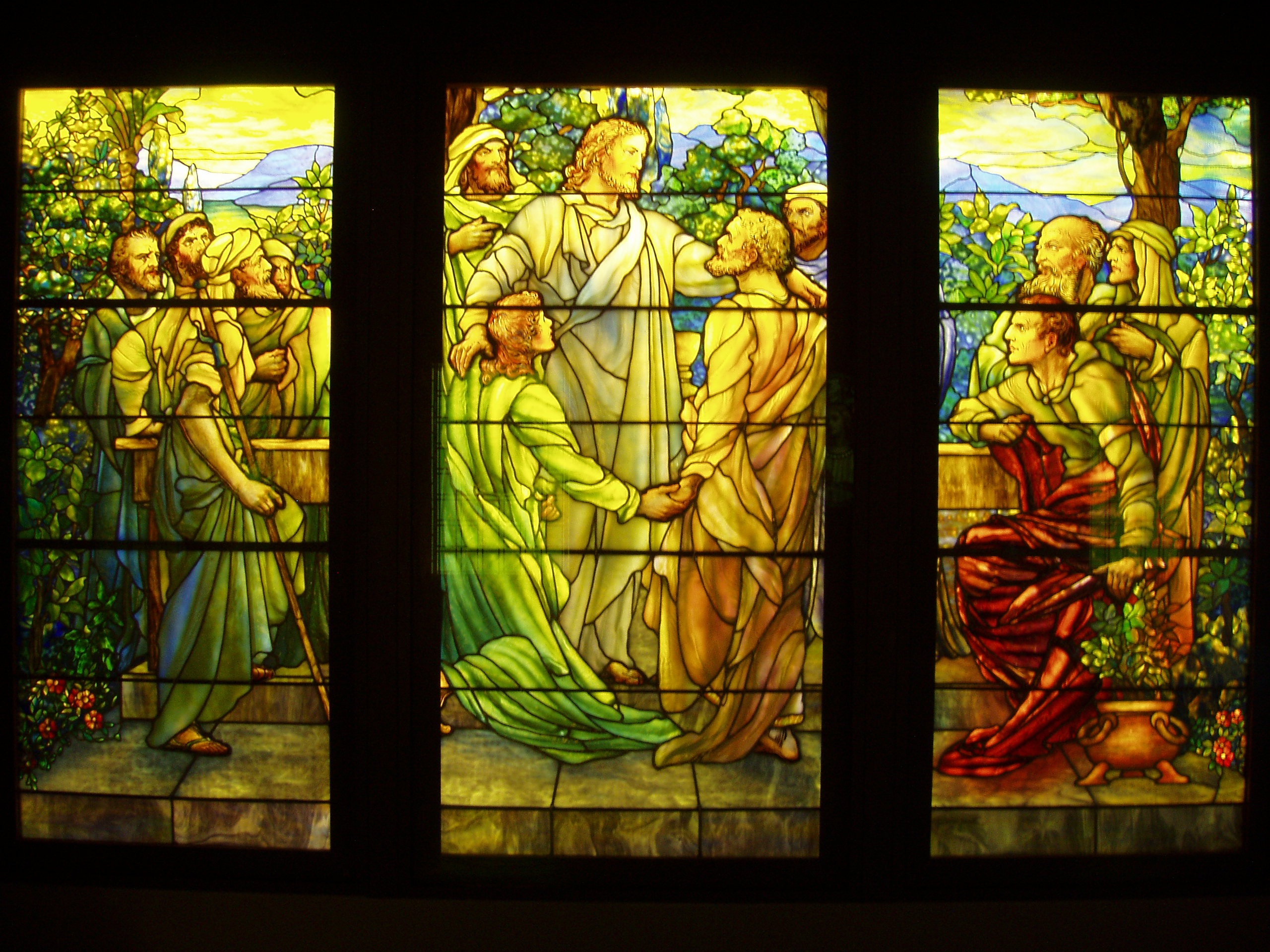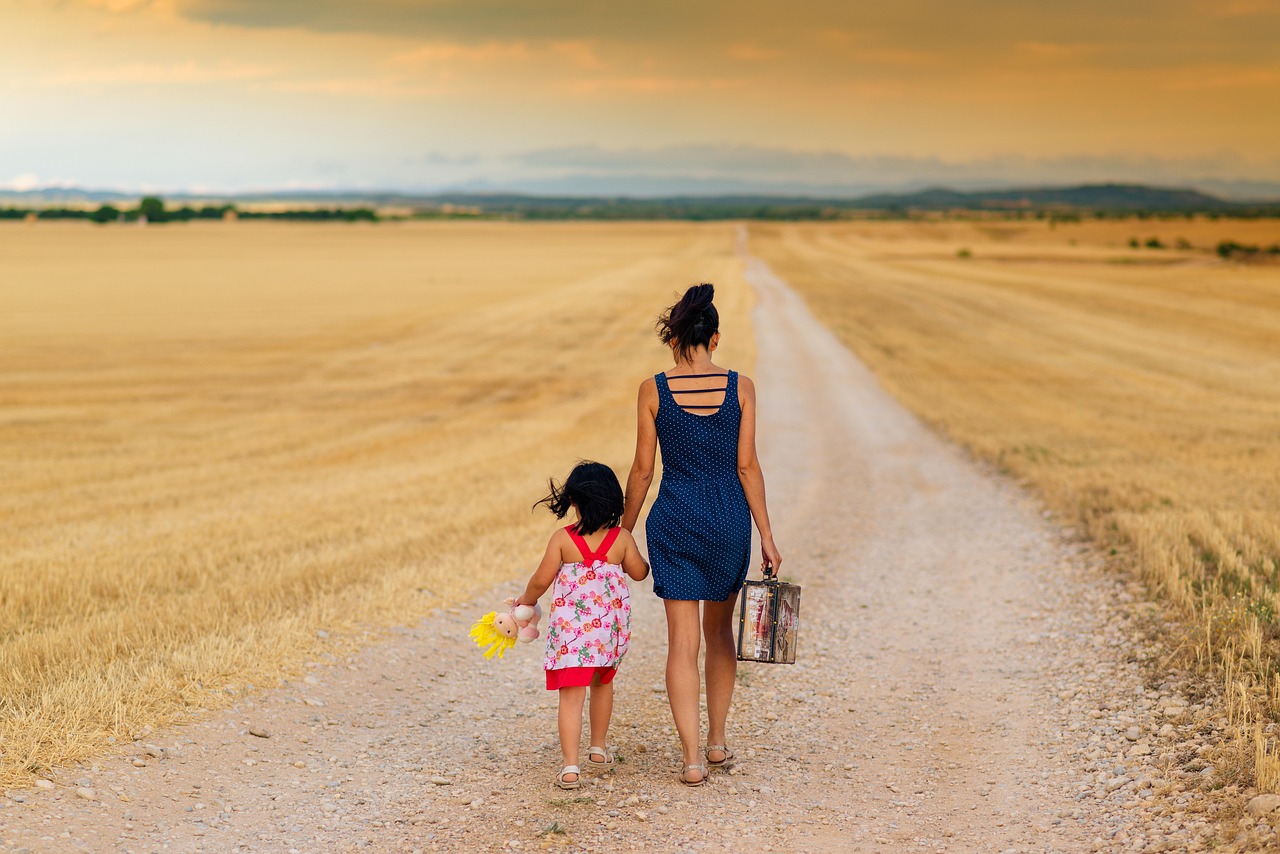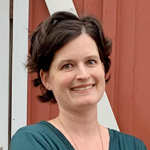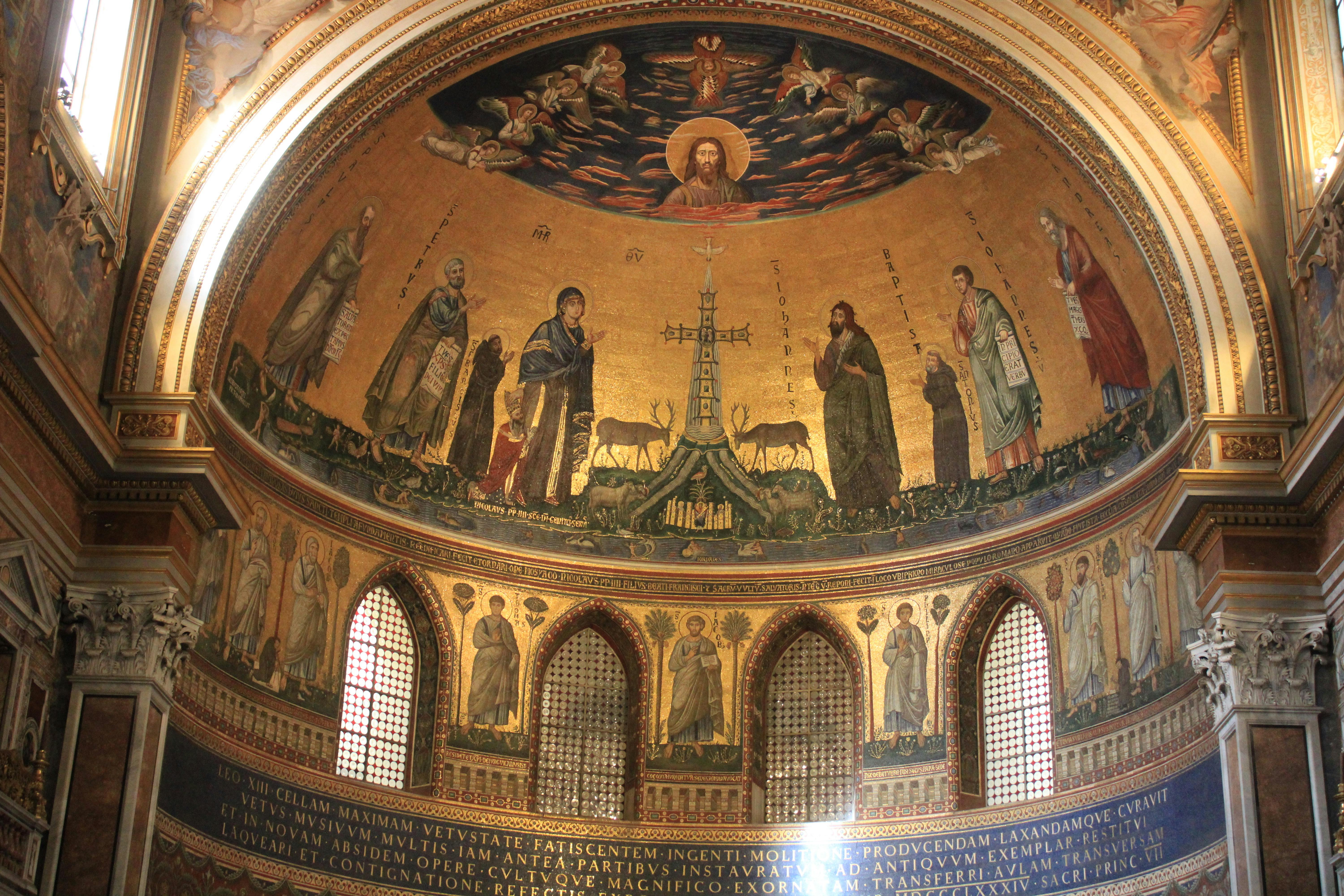In today’s Gospel, Jesus is walking with His disciples when someone says to him, “I will follow you wherever you go.” To another Jesus says, “Follow me.” Yet another says, “I will follow you, Lord, but first let me say farewell to my family at home.” Jesus answers him, “No one who sets a hand to the plow and looks to what was left behind is fit for the Kingdom of God.”
If Jesus asked you to follow Him, would you know what to do? If not, let’s look to today’s saint, Thérèse of Lisieux. Her greatest desire was to be a saint and she earnestly tried with enthusiastic love for Jesus and by making simple sacrifices, which earned her the nickname “The Little Flower”. As a Carmelite nun, she felt very small in comparison to the other saints she knew about. If not for her autobiography, Story of a Soul, she might have never been known beyond her convent’s walls. After she died in 1897 at age 24, and her book was published, she became so revered that she was canonized in 1925. She became the saint she longed to be during her short life.
Here are a few words from her story: “The heart of a child does not seek riches and glory (even the glory of heaven). She understands that this glory belongs by right to her brothers, the angels and saints…What this child asks for is Love. She knows only one thing: to love you, O Jesus.”
Thérèse adds, “Well, the little child will strewn flowers, she will perfume the royal throne with their sweet scents, and she will sing in her silvery tones the canticle of Love. O my Jesus! I love you! I love the Church, my Mother!” (Story of a Soul, translated by John Clarke, O.C.D.)
Thérèse wrote that Jesus gifted her in the convent with the flowers she had loved since childhood. St. Thérèse herself is known for sending flowers. People who pray novenas to her often receive a rose that confirms their petition was granted.
St. Thérèse shows that we don’t have to do big works to follow Jesus. She was just being herself, in her little way, making sacrifices when she could. She devoted her religious life to serving Jesus but she didn’t think that was enough until she learned to serve through simple acts of obedience and love.
“…God gives the hundredfold in this life to those souls who leave everything for love of Him.” Thérèse wrote. And that is exactly what she did. May she be an example for us all.
En el Evangelio de hoy, Jesús camina con sus discípulos cuando alguien le dice: “Te seguiré a donde quiera que vayas”. A otro Jesús le dijo: “Sígueme”. Aún otro le dijo, “Te seguiré, Señor; pero déjame primero despedirme de mi familia”. Jesús le responde: “El que empuña el arado y mira hacia atrás, no sirve para el Reino de Dios”.
Si Jesús te pidiera que lo siguieras, ¿sabrías qué hacer? Si no, miremos a la santa de hoy, Teresa de Lisieux. Su mayor anhelo era ser santa y lo intentó con fervor, con un amor entusiasta por Jesús y con sencillos sacrificios, lo que le ganó el apodo de “La Pequeña Flor”. Como monja carmelita, se sentía muy pequeña en comparación con las otras santas que conocía. De no ser por su autobiografía, Historia de un alma, quizá nunca habría sido conocida fuera de los muros de su convento. Tras su muerte en 1897 a los 24 años y la publicación de su libro, se volvió tan venerada que fue canonizada en 1925. Se convirtió en la santa que anhelaba ser durante su corta vida.
Aquí hay algunas palabras de su historia: “El corazón de una niña no busca riquezas ni gloria (ni siquiera la gloria del cielo). Entiende que esta gloria pertenece por derecho a sus hermanos, los ángeles y los santos… Lo que esta niña pide es amor. Solo sabe una cosa: amarte, oh Jesús”. Teresa añade: “Pues bien, la pequeña esparcirá flores, perfumará el trono real con sus dulces aromas y cantará con sus tonos plateados el cántico de amor. ¡Oh, Jesús mío! ¡Te amo! ¡Amo a la Iglesia, mi Madre!” (Historia de un alma)
Teresa escribió que Jesús le regaló en el convento las flores que le habían encantado desde la infancia. De hecho, Santa Teresita es conocida por enviar flores. Quienes le rezan novenas a menudo reciben una rosa que confirma que su petición fue concedida.
Santa Teresita demuestra que no tenemos que hacer grandes obras para seguir a Jesús. Ella simplemente era ella misma, a su manera, haciendo sacrificios cuando podía. Dedicó su vida religiosa a servir a Jesús, pero no creía que fuera suficiente hasta que aprendió a servir mediante sencillos actos de obediencia y amor.
“…Dios da el céntuplo en esta vida a las almas que lo dejan todo por amor a Él”, escribió Teresita. Y eso es exactamente lo que ella hizo. Que sea un ejemplo para todos nosotros.
 Christine Arata is a San Francisco, California native. She lives a few blocks away from the ocean and a park. She finds nature inspiring. Her cat brings her comfort. She loves being creative not only with her writing but with almost everything, including her home cooking. Her studies in the Catholic faith are ongoing. In 2019, when she discovered St. Hildegard of Bingen was underrepresented by Catholics, she found a purpose. Her latest website, St. Hildegard’s Wisdom features blog posts about all of that: https://sthildegardswisdom.com
Christine Arata is a San Francisco, California native. She lives a few blocks away from the ocean and a park. She finds nature inspiring. Her cat brings her comfort. She loves being creative not only with her writing but with almost everything, including her home cooking. Her studies in the Catholic faith are ongoing. In 2019, when she discovered St. Hildegard of Bingen was underrepresented by Catholics, she found a purpose. Her latest website, St. Hildegard’s Wisdom features blog posts about all of that: https://sthildegardswisdom.com
Feature Image Credit: Michael D, unsplash.com/photos/pink-rose-flower-nPo8m3JWhdE
The views and opinions expressed in the Inspiration Daily blog are solely those of the original authors and contributors. These views and opinions do not necessarily represent those of Diocesan, the Diocesan staff, or other contributors to this blog.


 Emily Jaminet is a Catholic author, speaker, radio personality, wife, and mother of seven children. She earned a bachelor’s degree in mental health and human services from the Franciscan University of Steubenville. She is the co-founder of
Emily Jaminet is a Catholic author, speaker, radio personality, wife, and mother of seven children. She earned a bachelor’s degree in mental health and human services from the Franciscan University of Steubenville. She is the co-founder of 


 Tami Urcia is a midwestern gal from a large Catholic family. As a young adulthood she was a missionary in Mexico, where she studied theology and philosophy. After returning stateside bilingual, she gained a variety of work experience, traveled extensively and finished her Bachelor’s Degree at Brescia University. She loves organizing and simplifying things, watching her children play sports, deep conversations with close family and friends and finding unique ways to brighten others’ day with Christ’s love. She works full time at Diocesan in the Software Department and manages the Inspiration Daily reflections. She is also a contributing writer on
Tami Urcia is a midwestern gal from a large Catholic family. As a young adulthood she was a missionary in Mexico, where she studied theology and philosophy. After returning stateside bilingual, she gained a variety of work experience, traveled extensively and finished her Bachelor’s Degree at Brescia University. She loves organizing and simplifying things, watching her children play sports, deep conversations with close family and friends and finding unique ways to brighten others’ day with Christ’s love. She works full time at Diocesan in the Software Department and manages the Inspiration Daily reflections. She is also a contributing writer on 
 Felix Urcia was born in Lima, Peru. He moved the U.S. to complete his college degree in Computer Science at Northern Kentucky University. He is passionate about his faith, his family, education and soccer. When he is not homeschooling and caring for his young children he enjoys personal programing projects and sports analysis. He and wife live in a small town in Western Michigan where they enjoy spending time with their five children.
Felix Urcia was born in Lima, Peru. He moved the U.S. to complete his college degree in Computer Science at Northern Kentucky University. He is passionate about his faith, his family, education and soccer. When he is not homeschooling and caring for his young children he enjoys personal programing projects and sports analysis. He and wife live in a small town in Western Michigan where they enjoy spending time with their five children.



 Kate Taliaferro is an Air Force wife and mother. She is blessed to be able to homeschool, bake bread and fold endless piles of laundry. When not planning a school day, writing a blog post or cooking pasta, Kate can be found curled up with a book or working with some kind of fiber craft. Kate blogs at
Kate Taliaferro is an Air Force wife and mother. She is blessed to be able to homeschool, bake bread and fold endless piles of laundry. When not planning a school day, writing a blog post or cooking pasta, Kate can be found curled up with a book or working with some kind of fiber craft. Kate blogs at 
 Kathryn Mulderink, MA, is married to Robert, Station Manager for Holy Family Radio. Together they have seven children (including Father Rob), and eleven grandchildren. She is President of the local community of Secular Discalced Carmelites and has published five books and many articles. Over the last 30 years, she has worked as a teacher, headmistress, catechist, Pastoral Associate, and DRE, and as a writer and voice talent for Catholic Radio. Currently, she serves the Church by writing and speaking, and by collaborating with various parishes and to lead others to encounter Christ and engage their faith. Her website is
Kathryn Mulderink, MA, is married to Robert, Station Manager for Holy Family Radio. Together they have seven children (including Father Rob), and eleven grandchildren. She is President of the local community of Secular Discalced Carmelites and has published five books and many articles. Over the last 30 years, she has worked as a teacher, headmistress, catechist, Pastoral Associate, and DRE, and as a writer and voice talent for Catholic Radio. Currently, she serves the Church by writing and speaking, and by collaborating with various parishes and to lead others to encounter Christ and engage their faith. Her website is 
 Kimberly Andrich writes from the perspective of having a hidden, chronic illness and experiencing a deep, continuous conversion through being yoked to Jesus in the day-to-day trials and joys of life. She is a wife, mother of 5, and daughter of the King. Kimberly also writes for
Kimberly Andrich writes from the perspective of having a hidden, chronic illness and experiencing a deep, continuous conversion through being yoked to Jesus in the day-to-day trials and joys of life. She is a wife, mother of 5, and daughter of the King. Kimberly also writes for 
 Merridith Frediani loves words and is delighted by good sentences. She also loves Lake Michigan, dahlias, the first sip of hot coffee in the morning, millennials, and playing Sheepshead with her husband and three kids. She writes for Catholic Mom, Diocesan.com, and her local Catholic Herald. Her first book Draw Close to Jesus: A Woman’s Guide to Adoration is available at Our Sunday Visitor and Amazon. You can learn more at
Merridith Frediani loves words and is delighted by good sentences. She also loves Lake Michigan, dahlias, the first sip of hot coffee in the morning, millennials, and playing Sheepshead with her husband and three kids. She writes for Catholic Mom, Diocesan.com, and her local Catholic Herald. Her first book Draw Close to Jesus: A Woman’s Guide to Adoration is available at Our Sunday Visitor and Amazon. You can learn more at 
 Former NPS Park Ranger, Catholic educator, and Youth Minister, Melissa Lucca now spends her days evangelizing family and neighbors as a stay-at-home mom. She holds an MA in Theology from the Augustine Institute and pursues personal study in her spare time. Melissa loves Ignatian Spirituality, Mother Mary, and rock climbing. If you don’t hear her and her kiddo laughing at home, then they are probably out on an adventure!
Former NPS Park Ranger, Catholic educator, and Youth Minister, Melissa Lucca now spends her days evangelizing family and neighbors as a stay-at-home mom. She holds an MA in Theology from the Augustine Institute and pursues personal study in her spare time. Melissa loves Ignatian Spirituality, Mother Mary, and rock climbing. If you don’t hear her and her kiddo laughing at home, then they are probably out on an adventure!